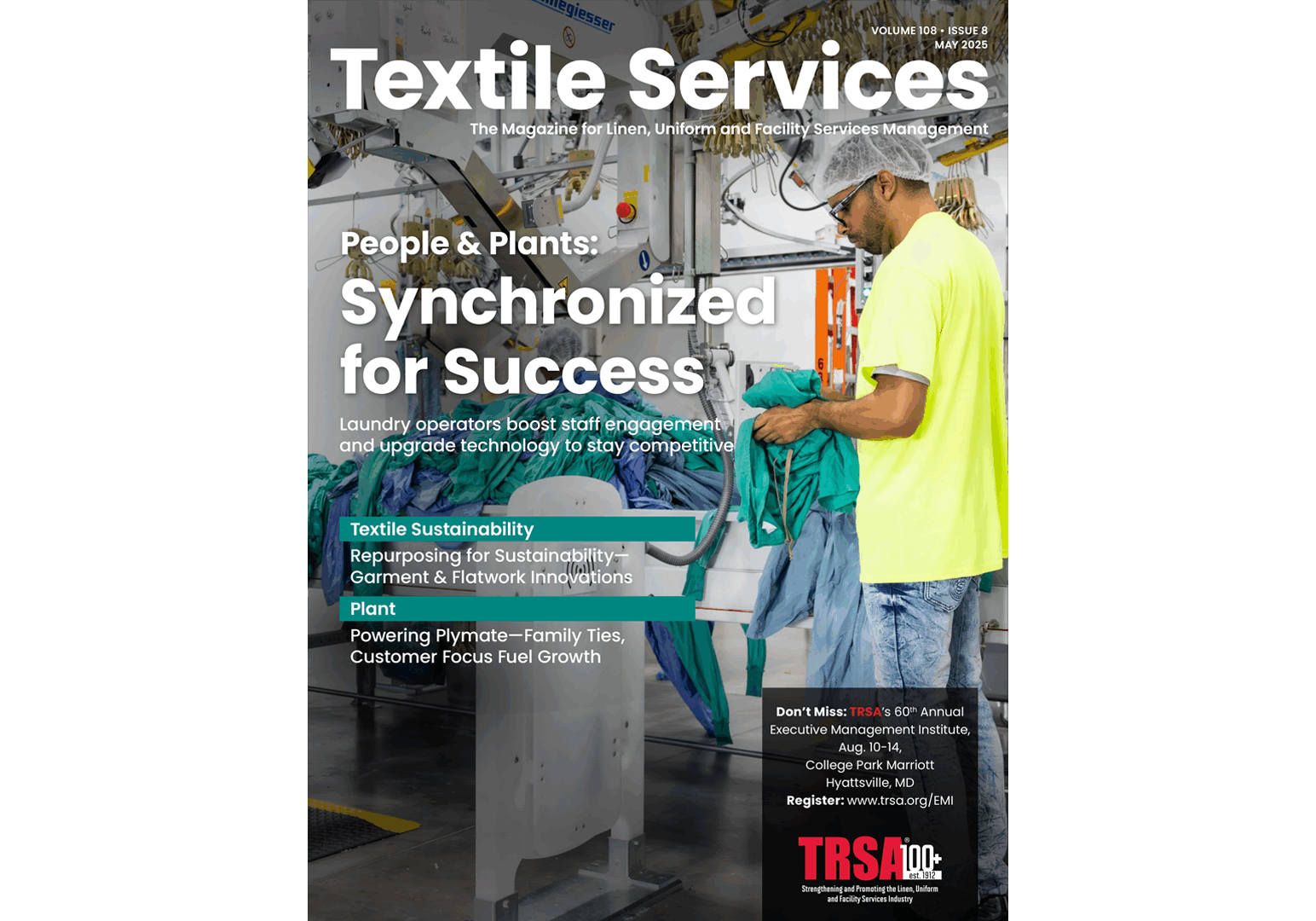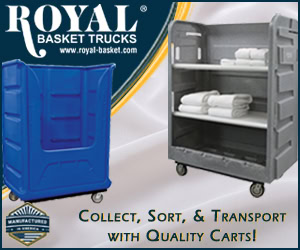To thrive in today’s markets, laundry operators are pursuing a two-pronged strategy of investing in technology/systems for improved productivity, while providing training and support that boosts staff engagement. That’s the key takeaway of Textile Services’ May cover article, “People & Plants – Synchronized for Success.”
An essential point noted by COO Ernest Addington of Halifax Linen Service, Roanoke Rapids, NC, is that with proper training, staff not only can make the most of tech investments, but these improvements tend to enhance morale and recruitment/retention. “Training on new machinery or systems is essential because it can significantly affect productivity, safety and employee morale,” Addington said in the article. “An effective training approach should consider various factors: hands-on training that is providing employees with the equipment in a controlled, supportive environment to ensure they become comfortable using it.” He added that “Involving experts and providing ongoing support are key.”
Conversely, companies that think they can cut corners on training are likely to confront reduced productivity and staff morale, said consultant Don Maida of Tingue. “It is essential for operators to be properly trained on how to use the new equipment as soon as possible,” he said. “This will not only help in maximizing proper utilization but also will help deter the risk of damaging new equipment from improper use. I have seen enthusiasm turn to abject frustration because training was poorly implemented. ‘Work the bugs out’ is not a plan.”
The same goes for the role that innovations in new equipment and systems can have on your company’s ability to recruit and retain qualified staff. If implemented properly, with sufficient training and support, these investments can enhance your image among prospective employees. “When employees see that leadership is committed to upgrading machinery, it signals that the company values efficiency, safety and making their jobs easier,” said Christopher Stammer, CEO of Voluminant LLC, a business-productivity and management-performance improvement company. “But the implementation is critical,” said Stammer, who oversees TRSA’s LevelUp training initiative. He adds that training and communication are as important as the investment itself.
To the extent that linen, uniform and facility services companies can leverage technology to automate various operations, they’re also ahead of the game because that’s likely to translate to fewer ergonomic injuries and reduced fatigue in jobs that employees will find less taxing than before. Maida cites three potential benefits of upgrading equipment/systems: reducing ergonomic strain, boosting throughput and enhancing quality control. “Ergonomic improvements have an immediate impact on employee engagement,” he said. “Reducing lifting, straining and fatigue should be in the forefront when considering improvements.” Second, advanced equipment facilitates “getting faster to get better” without working harder. Third, systems like scanners on ironers can detect stains and tears automatically. This takes a bit of the pressure off of finishing side staff to detect these types of defects.
In essence, companies that invest in new equipment, while also providing thorough training and implementation of these systems, can create a virtuous circle of continuous improvement. In so doing, they provide support for staff, with enhanced productivity and quality in the services you provide. The full-length article in May’s magazine should land in your inbox this week. Or click here to see a PDF of the full article now if you prefer.
Publish Date
May 9, 2025
Categories
Sign Up For Our Newsletter
Receive the latest updates on the linen, uniform and facility services industry from TRSA delivered straight to your inbox.








